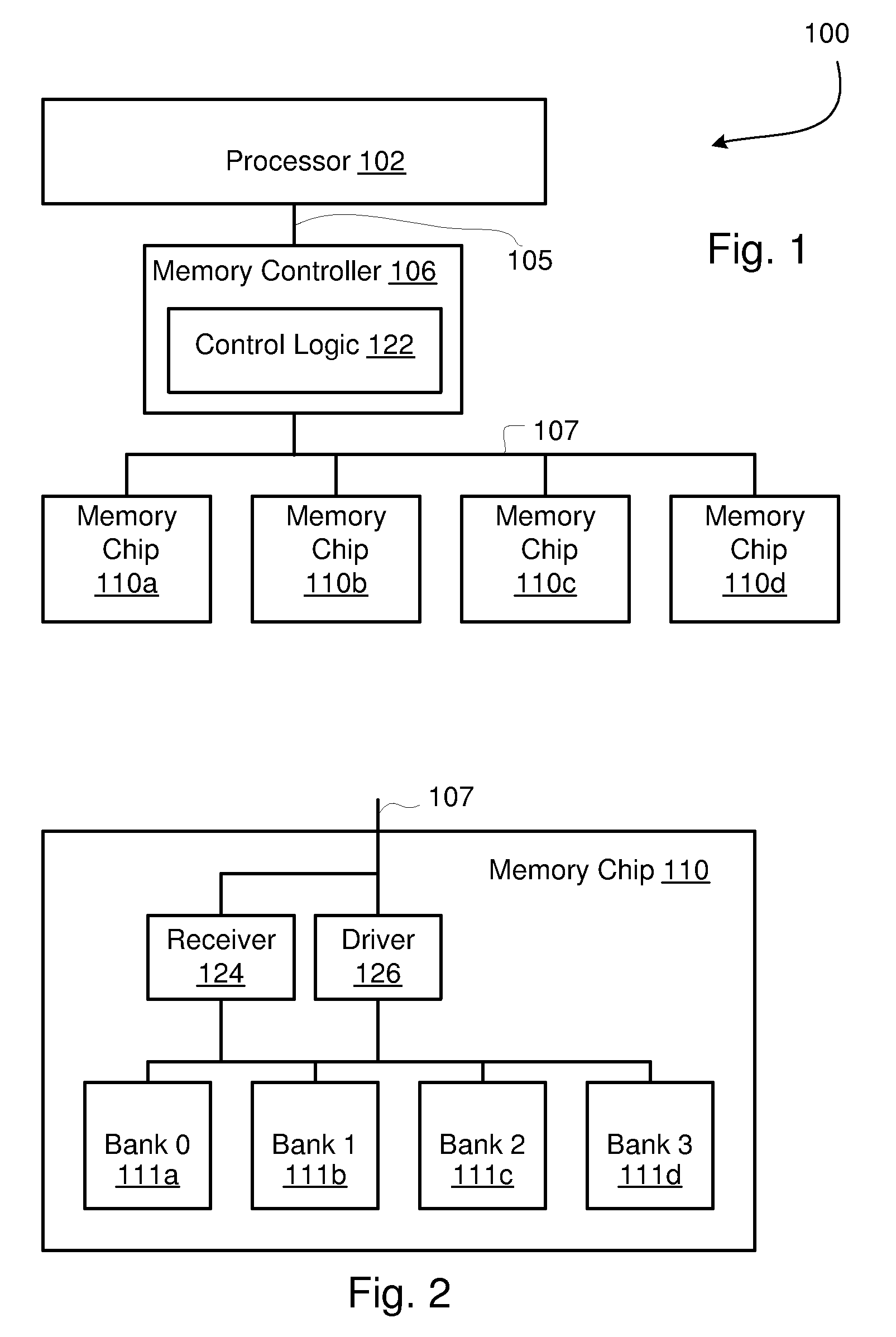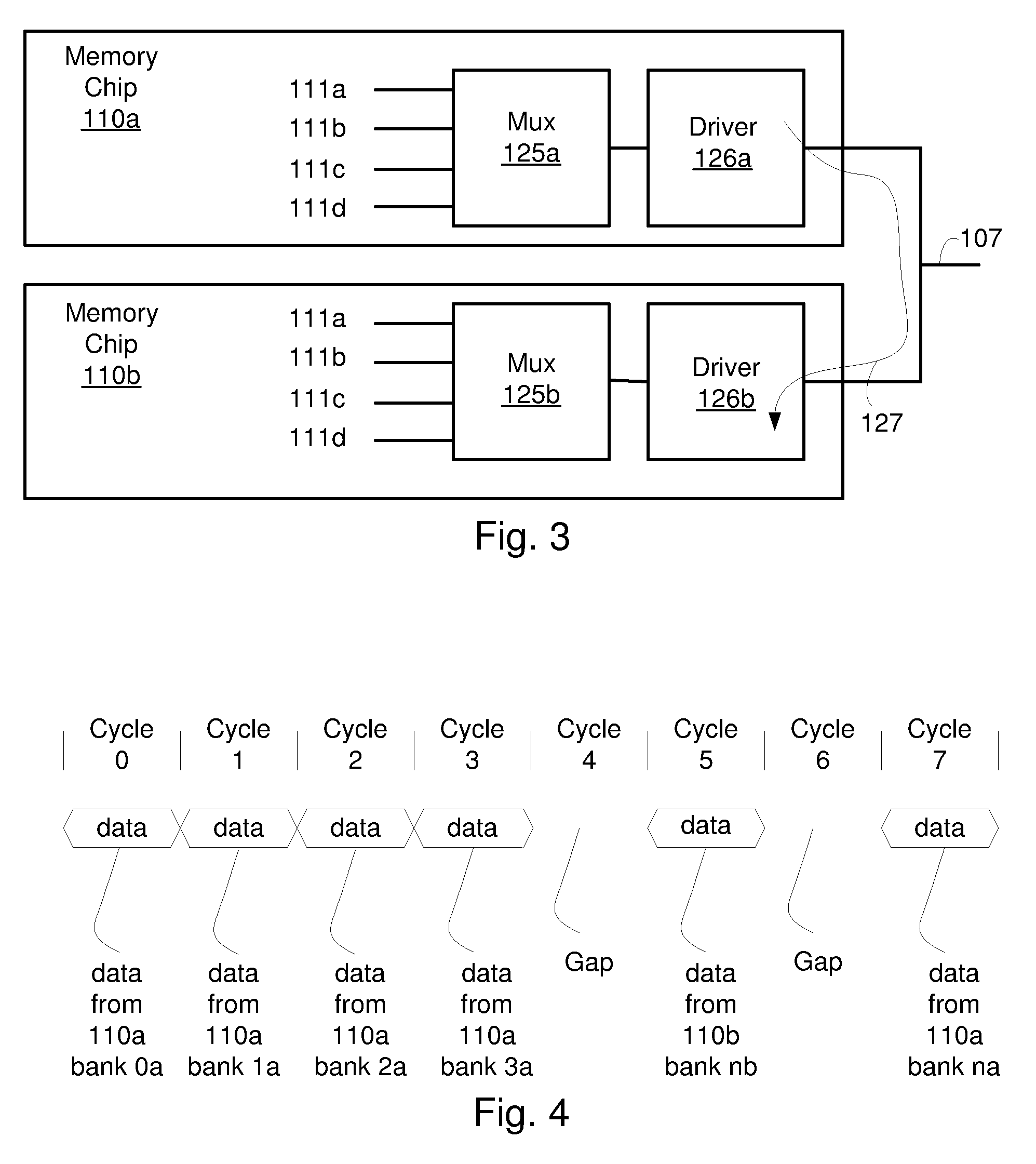Memory Controller Granular Read Queue Dynamic Optimization of Command Selection
- Summary
- Abstract
- Description
- Claims
- Application Information
AI Technical Summary
Benefits of technology
Problems solved by technology
Method used
Image
Examples
first embodiment
[0043]FIG. 6a shows a portion of control logic 122. The embodiment shown in FIG. 6a comprises request count 132 as described above and two thresholds, 130a and 130b. A first compare 133a compares request count 132 with “lower threshold”130a. A second compare 133b compares request count 132 with “upper threshold”130b. Compare 133a is coupled to a reset input of a latch 135. Compare 133b is coupled to a set input of latch 135. When computer system 100 is initialized, request count 132 is initialized to zero (that is, no pending requests). As processor 102 sends requests over processor bus 105, read queue 121 begins to queue up requests; request count 132 is incremented as requests enter read queue 121 and is decremented as requests from read queue 121 are serviced. Control logic 122, in the embodiment of FIG. 6a, begins in a low latency mode that is the memory access mode when latch 135 is reset. In the low latency mode, control logic 122 services requests in such a way as to minimize...
second embodiment
[0052]FIG. 6b shows control logic 122 that provides granularity in how requests are serviced depending on how full read queue 121 is becoming. Control logic 122 in FIG. 6b includes request count 132, which indicates how many pending requests are in read queue 121. Four thresholds 130 are shown in FIG. 6b, “Threshold A”130a; “Threshold B”130b; “Threshold C”, 130c; and “Threshold D”130d. The value currently in request count 132 is compared with each of the thresholds 130 using compares 133a, 133b, 133c, and 133d. For example, assuming a read queue 121 capable of storing sixteen requests, assume that threshold A 130a is set to eight; threshold B 130b is set to ten; threshold C 130c is set to twelve; and threshold D 130d is set to fourteen. When read queue 121 is fairly empty (less than eight requests), a “low latency” mode as described above is implemented; that is, an oldest request is serviced first unless a younger request can be serviced without impacting latency of the oldest requ...
PUM
 Login to View More
Login to View More Abstract
Description
Claims
Application Information
 Login to View More
Login to View More - R&D Engineer
- R&D Manager
- IP Professional
- Industry Leading Data Capabilities
- Powerful AI technology
- Patent DNA Extraction
Browse by: Latest US Patents, China's latest patents, Technical Efficacy Thesaurus, Application Domain, Technology Topic, Popular Technical Reports.
© 2024 PatSnap. All rights reserved.Legal|Privacy policy|Modern Slavery Act Transparency Statement|Sitemap|About US| Contact US: help@patsnap.com










